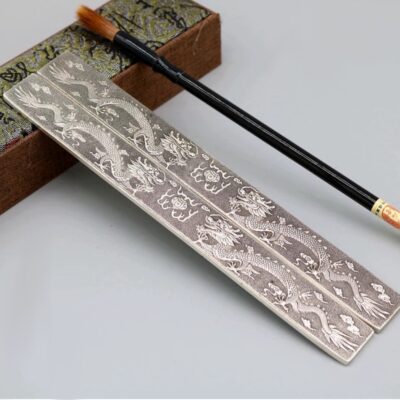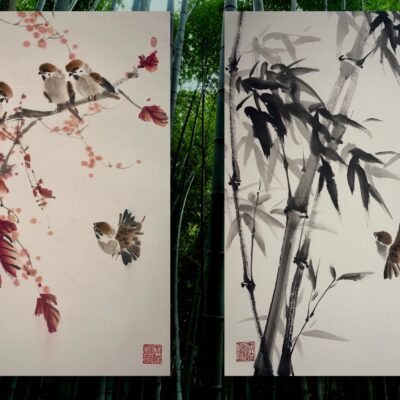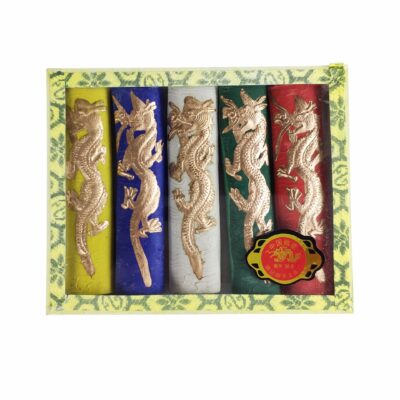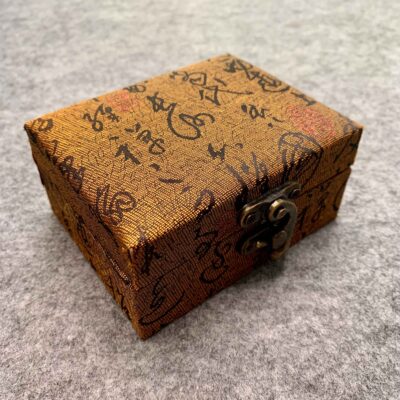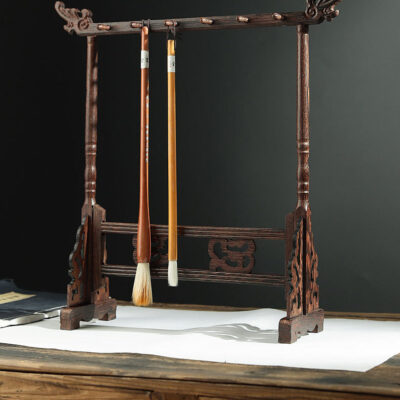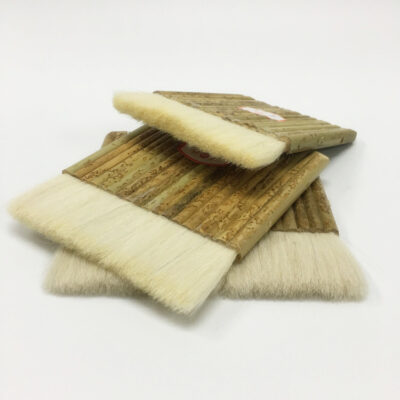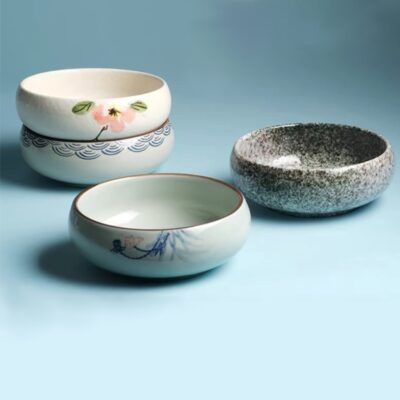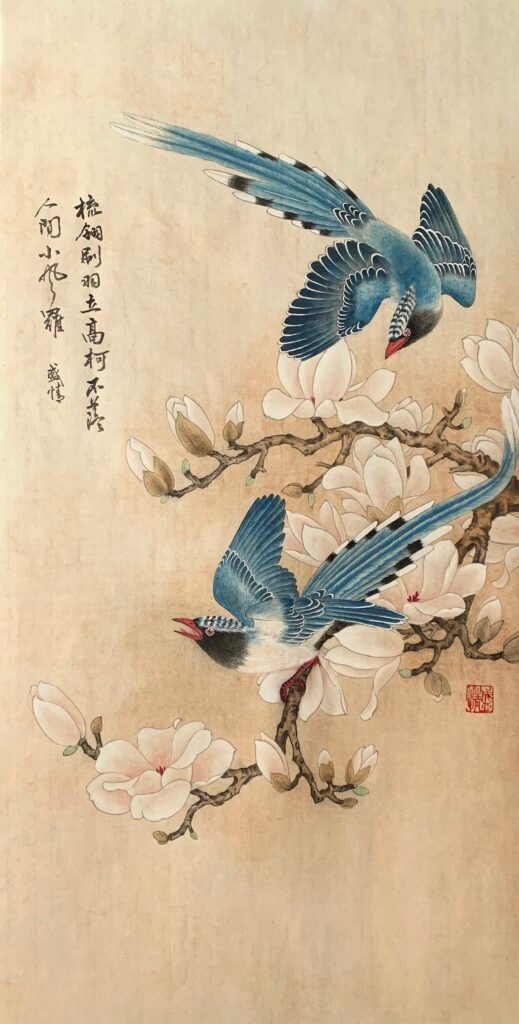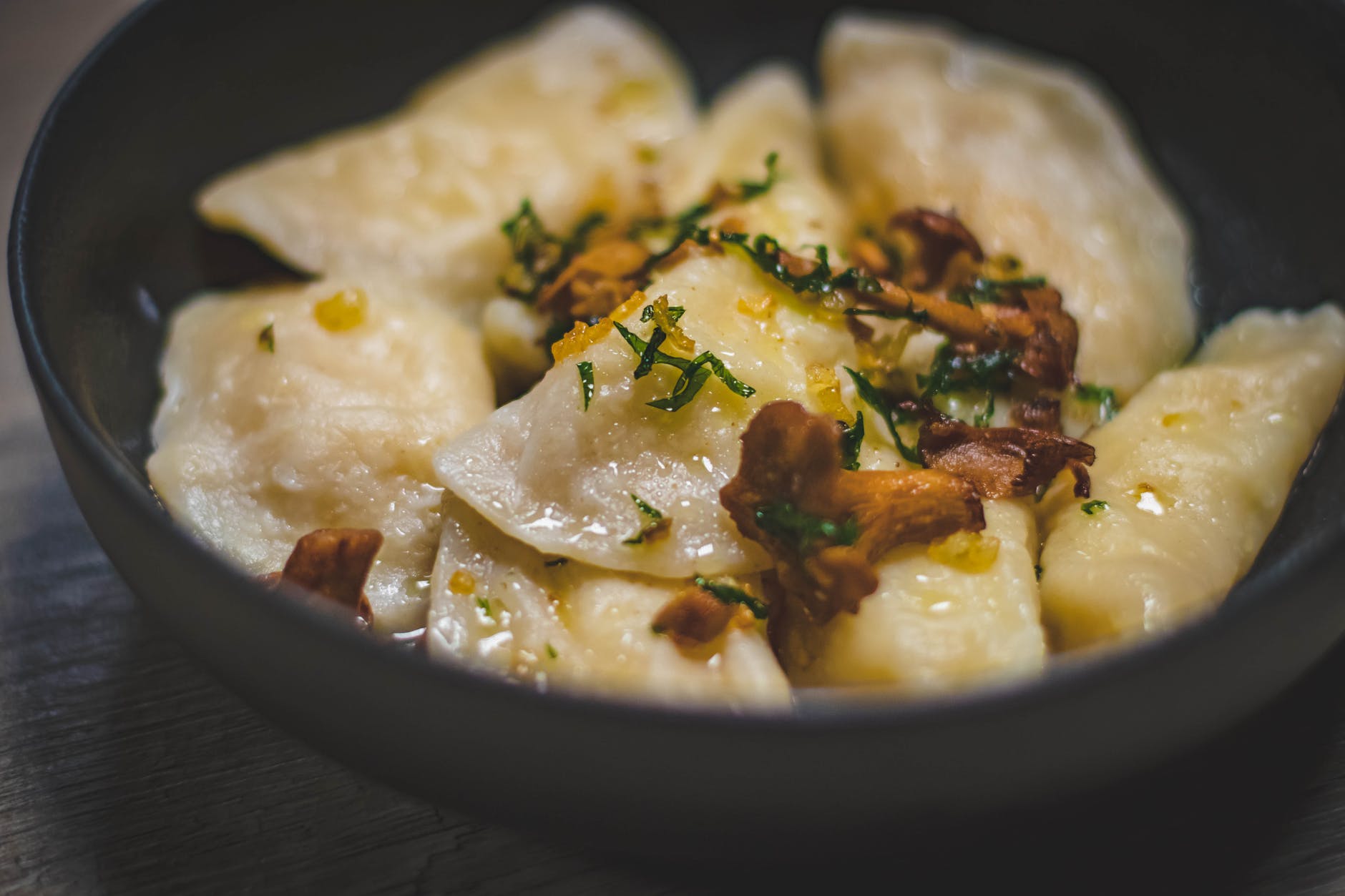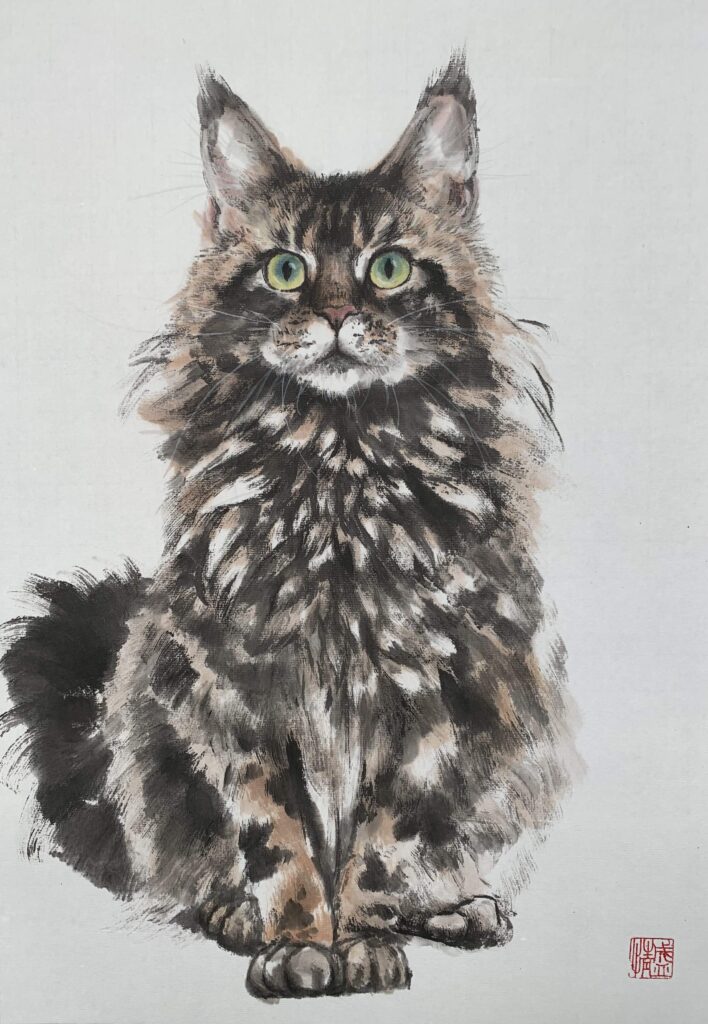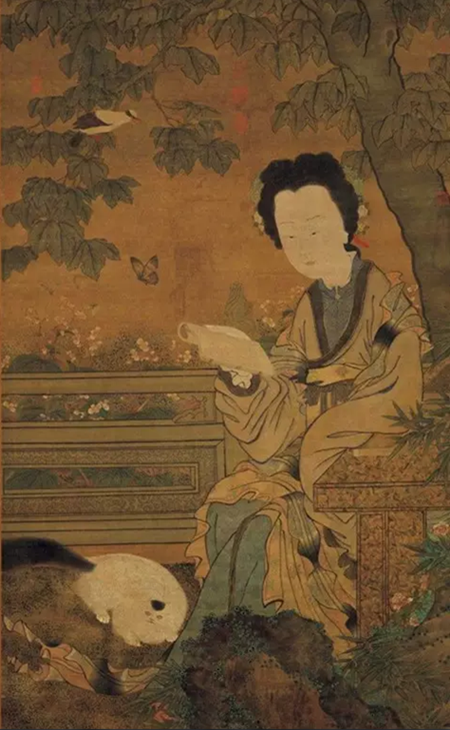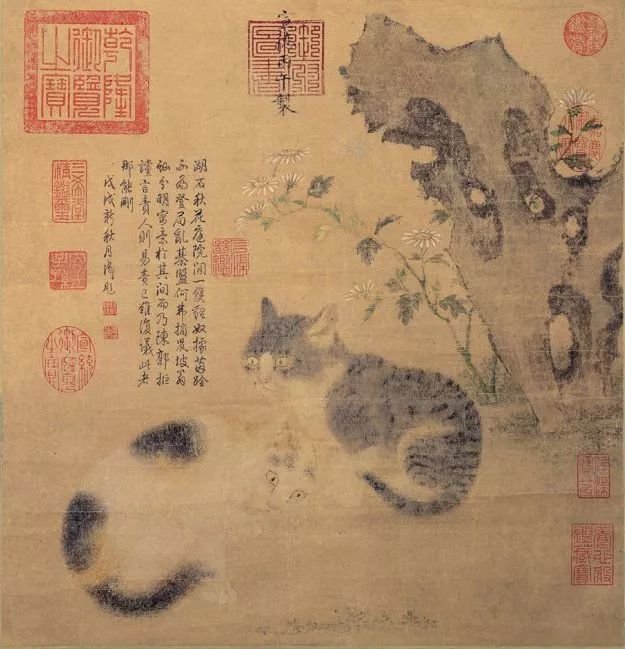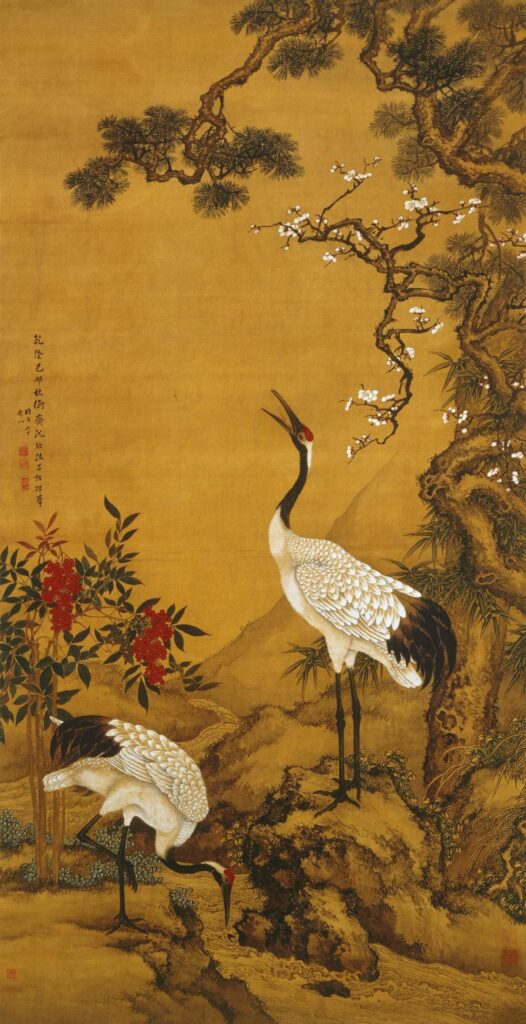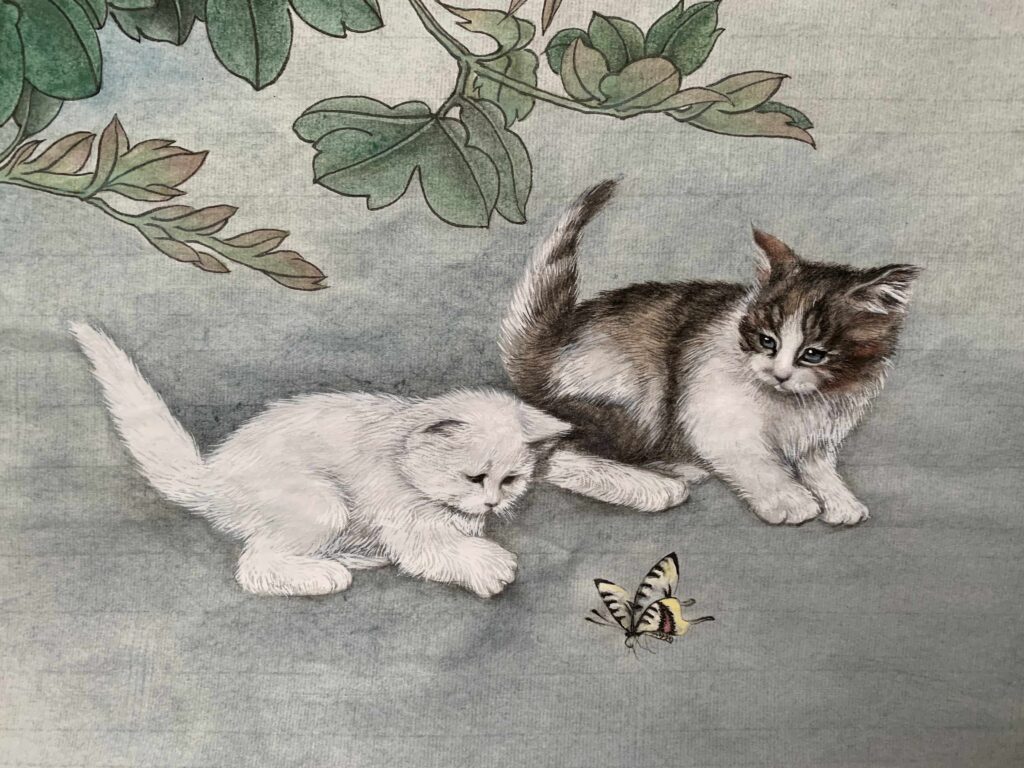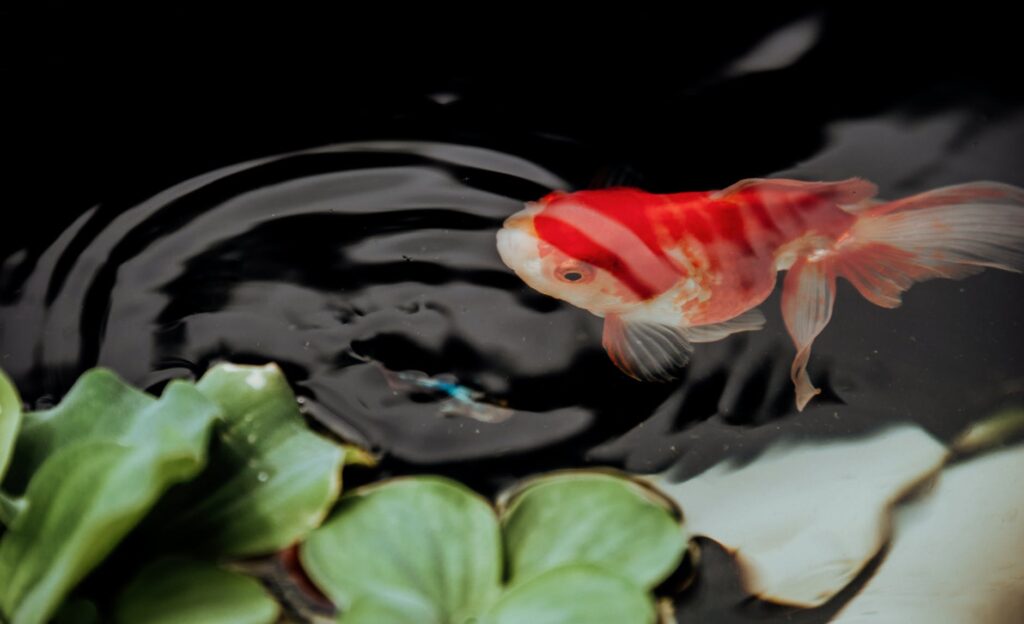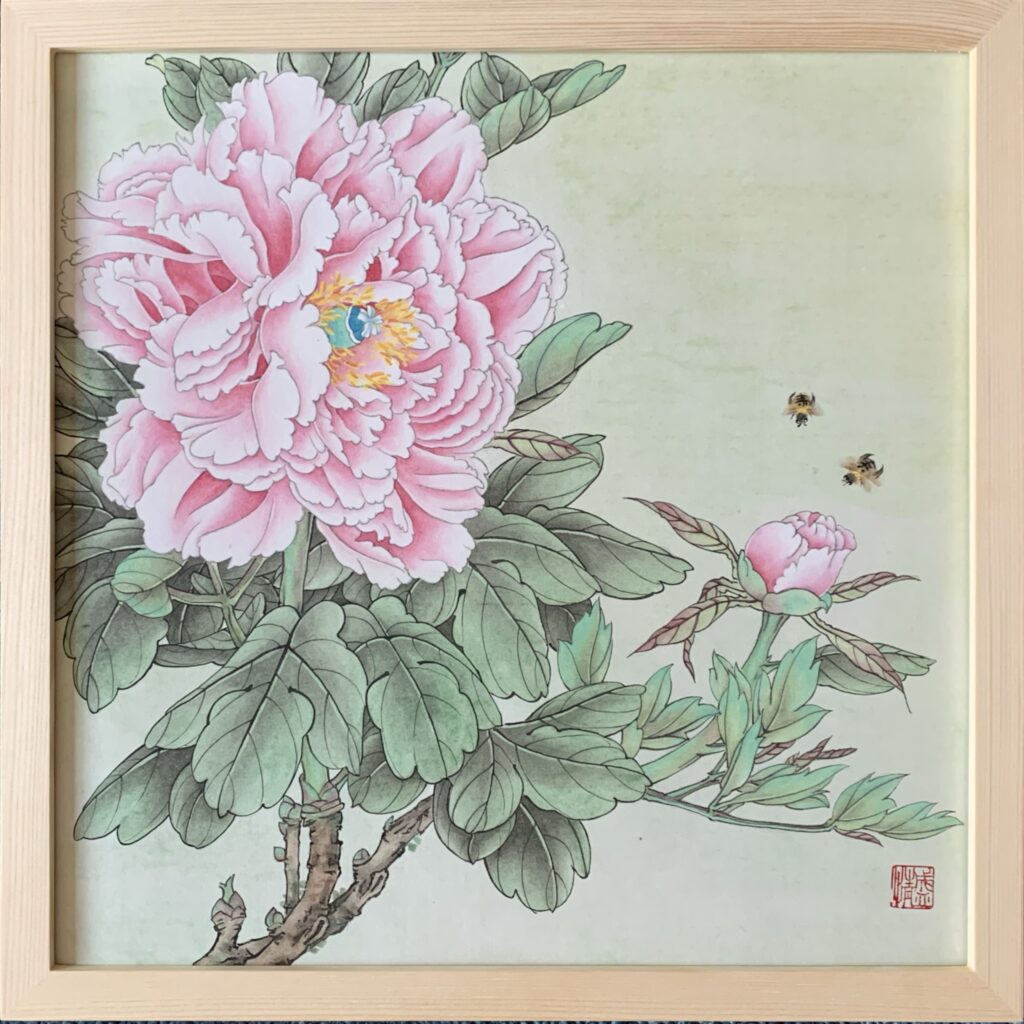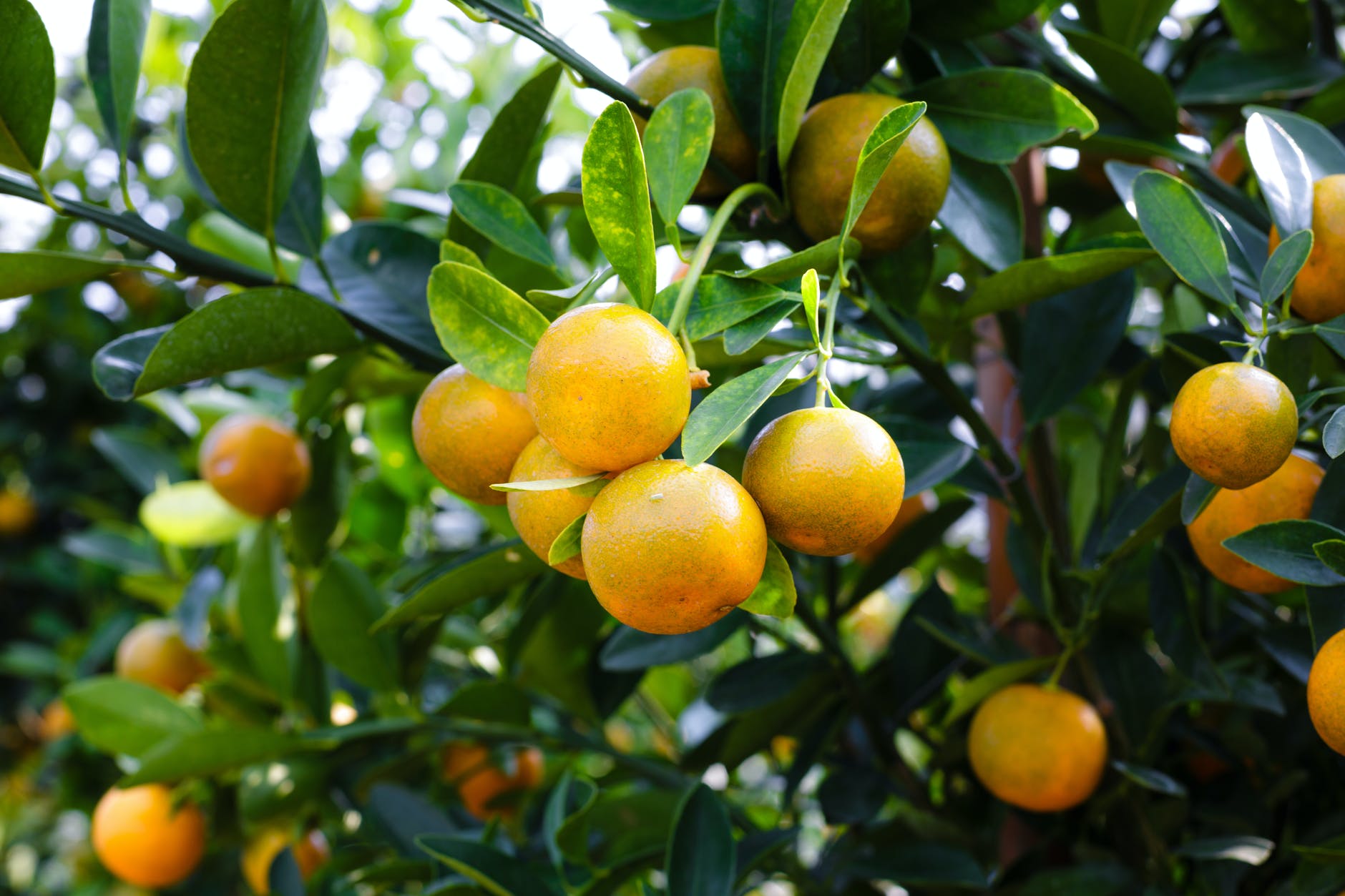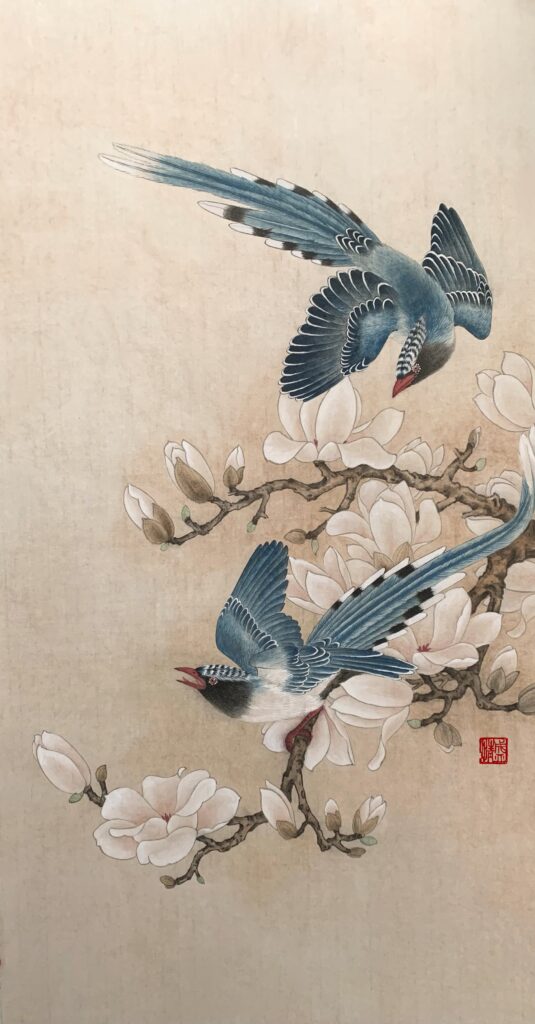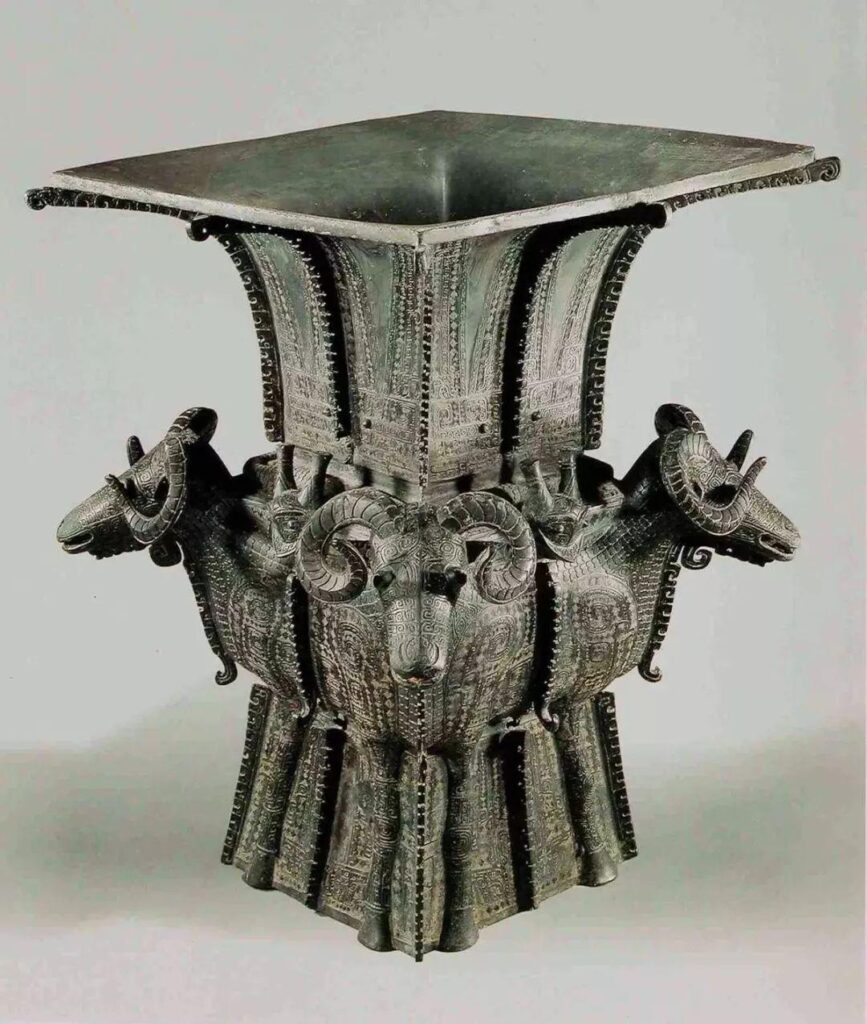Ancient hunters (1)
Hunting as a peculiar culture exists in many countries throughout our history. The intelligent ancient people quickly realised their own powers could not match that of the larger animals, so they grouped together and developed tools to help themselves, these tools started from stones and then involved metal. However, since a very long time ago, animals have also been engaged and trained to help with the huntings, and today let us take a look at a few awesome hunting helpers in the ancient Chinese society.

Lynx – Oriental Ink Brush Painting
Rice Paper, 33cm x 33cm
By Fiona Sheng
@InkDifferent Studio | Brussels
In the old texts, this sentence is often quoted to describe the hunting scene: the left hand carries the yellow (hunting dogs), and in the right holds the eagle. This is a typical hunting scenario, so let us start with the hunting dogs and eagles.
The dogs, especially the “fine dog” (“细犬”) – the Chinese hound, as the painting shows below proved to be one of the best hunting companions in the ancient time. They are known for their acute sense of smell, slender body shape and high speed. They have been famous since the Qin Dynasty, over 2500 years ago, and today there are a few regionalised (mostly Shaanxi province) species of these dogs, however, they are quite rare and therefore precious. They are also known for their mild temper and elegant posture, making them the most beloved hunting dogs in the royal palaces. In the Qing Dynasty, a royal painter named Giuseppe Castiglione (郎世宁) (1688-1766) painted many portraits of the royal animals from the palaces, and amongst these paintings the Chinese hounds had the most representation.

There are in fact many other dog species precious to the ancient hunting activities, their status could be seen in the discoveries from ancient tombs, where the remains still wore gold or silver collars. In the paintings from the old days the hunting dogs were also very noticeable, such as the image below. In the same image an eagle is also quite visible on the prince’s shoulder. To be more precise, this bird should be a gyrfalcon.

In the Tang Dynasty and again in the Yuan Dynasty where ethnic cultures prevailed in the Middle Kingdom, these ethnic activities were accompanied by the hunting cultures. Falcons were often employed together with dogs to provide a stimulating hunting “show” – the birds strike first, attaching the prey and then the dogs arrive to make the final kill, as the falcons in size often could not match that of the preys. The following painting from the Ming Dynasty (1368-1644) vividly describes the moment where the falcon was about to make the final kill over this swan. You may also notice that the falcon is white, which is an extremely rare color in this bird species, but the white ones are always the most loved auspicious color, and therefore the white falcons would make the best royal hunting companions.

There are dedicated falcon trainers for the hunting of either swan or goose, distinguishable from the trainers’ hat feather colors. The Liao Dynasty (907-1125) was known for its hunting culture, and in each hunting season, the very first falcon and its trainer would receive the most honorable awards. The hunting “show” was also the most elaborate in this period of time.
In the next post let us continue exploring a few other animals that are great hunting companions, so stay tuned!
Enjoy such cultural discussions? Have comments? I look forward to hearing from you!
Buy Artworks | Learn Brush Painting | Learn Chinese Calligraphy
Ancient hunters (1) Read More »

